Edit: Mustard is now in Anjuna
There are a number of trends dominating the restaurant scene right now. “Regional” dishes are gaining popularity, fusion restaurants are melding Indian flavours with Mexican, Chinese and whatnot, and exotic ingredients feature in recipes.
Amidst the excitement, I’ve never come across a restaurant that pays homage to an ingredient in a way that Mustard does. Located a stone’s throw away from my home in Saligao, I visited it for the first time last week.
Mustard is housed in a beautiful villa, and brings together two radically different cuisines, Bengali and French, under one Portuguese tiled roof – all because they share a common ingredient – Mustard. The beauty of it all is that there’s no East-West fusion on the menu – each has their own standard preparations, the use of mustard remains traditional and they even have a separate kitchen for each cuisine!
In fact, the zing of the Mustard features in every single item on the menu in some way or the other – be it an ingredient in the recipe, the flavour or the garnish.
AMBIANCE
More French than Bengali, the decor is quaint and romantic, like stepping into an old movie. Large, windows with knick-knacks on the sill, white, wooden furniture and grey accents make it a subtle and calming atmosphere. Air-conditioned despite the high, tiled roof, one gets a roomy, airy feel inside.

Rather than opting for traditional table mats, floral cross mats in pastel shades take their place which add a nice touch. You can’t help but notice the quirky little snippets on the walls related to mustard, too. The only thing I’d change is the choice of music. Some fine instrumental music would perk up one’s mood for a good meal, rather than the 1920’s-like selection that was playing
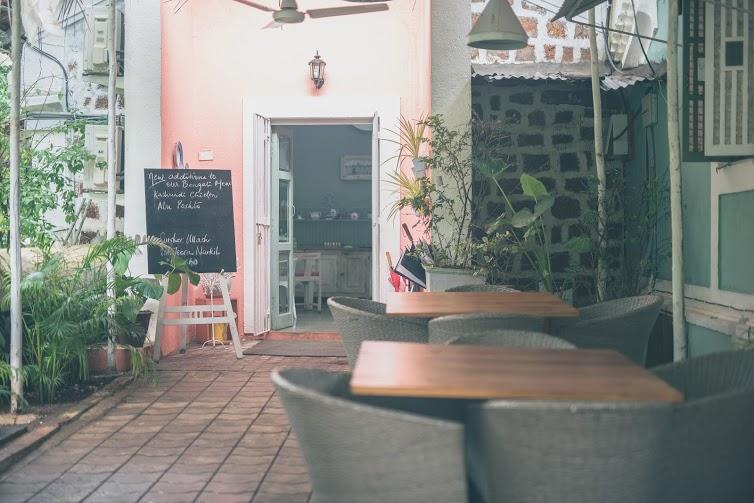
Outside, there are a variety of seating options and it would be nice to dine on a table under a big umbrella if the weather is pleasant. They have a well that’s converted into a stage where they host performers and musicians on some nights. In the corner is a well-kept garden patch, a place where they grow all their herbs and micro-greens.
SERVICE
The staff was hospitable and well-versed with the menu. An alert bunch, you don’t have to hunt for one, should the need arise as they keep scanning the room. Service is quick as well.
FOOD
With French and Bengali food on the menu, can you imagine how tongue-twisting each item was to pronounce? Haha! Nonetheless, the descriptions below each dish are clear, and some even have a little story behind them. I sampled more food from the Bengali menu, though. Here it is:
Tentul Joler Sherbet – I’ve never had a tamarind drink before.. are there even any out there? The mention of a tamarind and honey sherbet on the menu alongside it’s “beat the heat” byline was enough to make me order it. It brought back memories of knocking tamarinds off the trees with a stone and sharing it with friends! The tentul joler sherbet had stimulating flavours and a piquant punch that kept you going back for another sip.
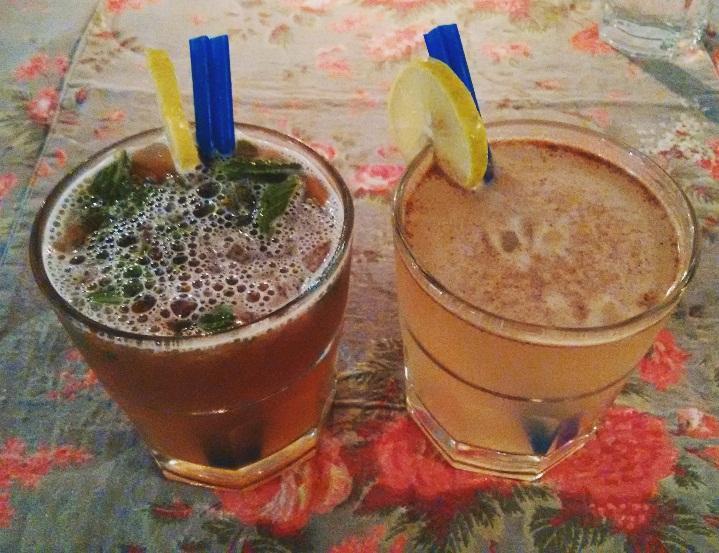
Aam Porar Sherbet – A tangy, refreshing soft drink makes all the difference on a summer day. Like the perfect antidote, this Bengali equivalent of Aam Panna was healthy, soothing and a far cry better than any aerated drink can hope to be. It was made by roasting green mangoes and gently spicing the pulp with cumin and black pepper to make a sherbet. Apparently, if you visit a Bengali household in the summer, this is the welcome drink they would offer. Both drinks were a definite #win, don’t miss out on trying them.
Home-made Bread and Mustard – Although it’s a complementary snack on every table, I can’t help but mention it. This is a chance to sample the restaurant’s own brand of mustard by itself, and not as an ingredient in one of their dishes. Add a liberal amount of butter on this perfectly crisp rye toast and debate on which you prefer. I liked the lighter one – it had less of a spicy hit.
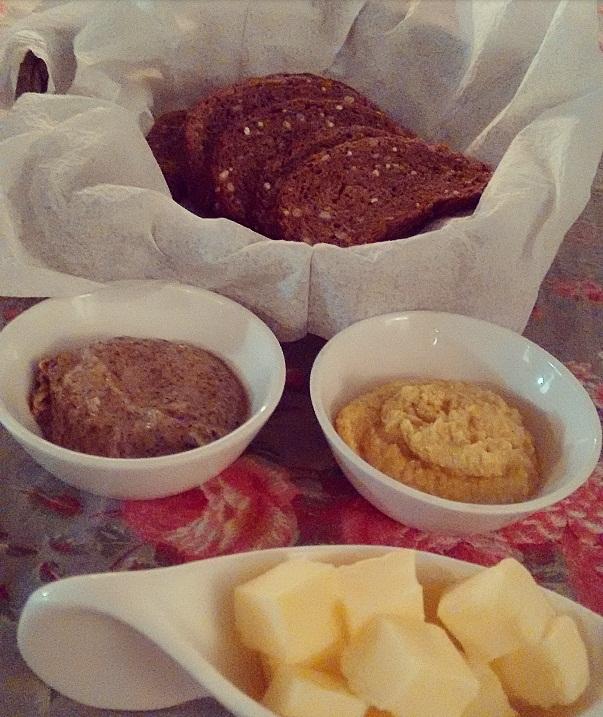
Shammi Kebab – Bengal’s cuisine is influenced to a certain extent, by the Muslim style of cooking. The Shammi kebab is one of the most popular ones adopted, and comprised of finely minced mutton and dal with fragrant spices. They were literally silky smooth, melt-in-your-mouth good! It came with a spicy mint dip that I passed on – because it tastes better on its own!
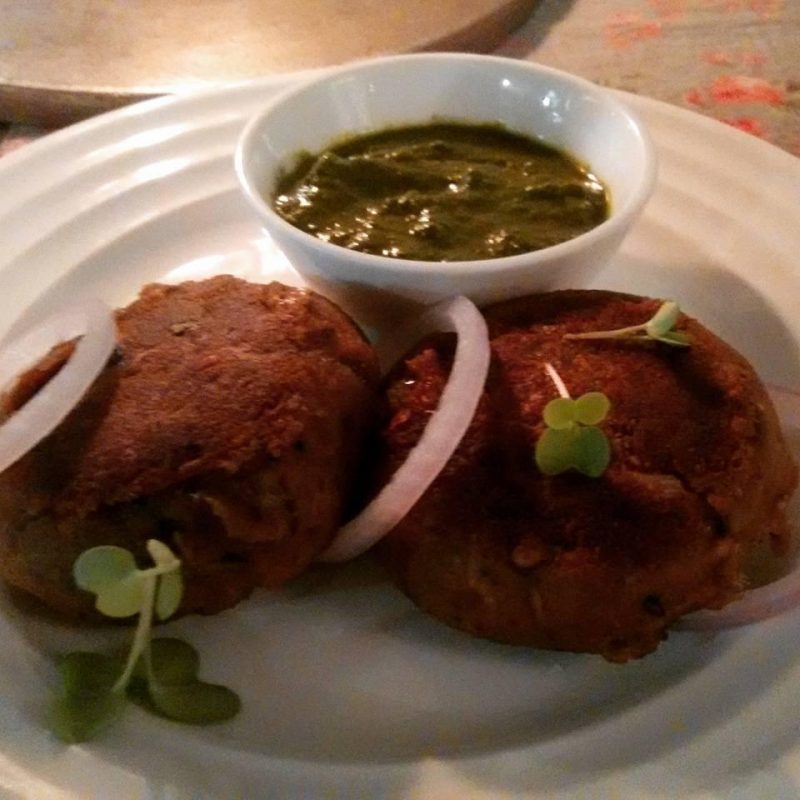
Chicken Scaloppini – A bit from the French menu now! Finely cut chicken strips were served alongside crunchy zucchini and garden herbs. While the veggies added some freshness to the dish, it was a tad dry. Some honey-mustard dressing or tartar sauce would have definitely helped.
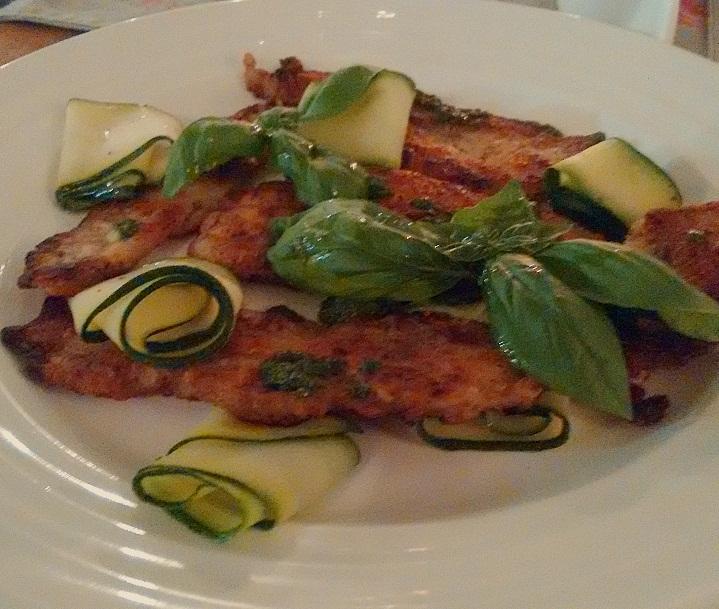
BBQ on Fritters – Grilled prawns on a light corn fritter and a sweet slice of pineapple in between made for another great starter. I expected the fritter to be made of corn flour, but was quite surprised to find actual corn inside. Who doesn’t love corn! It was a great combination of smokey, juicy and crunchy. A bit unusual, but then those are the dishes a restaurant is remembered for, rather than the run-of-the-mill selections.
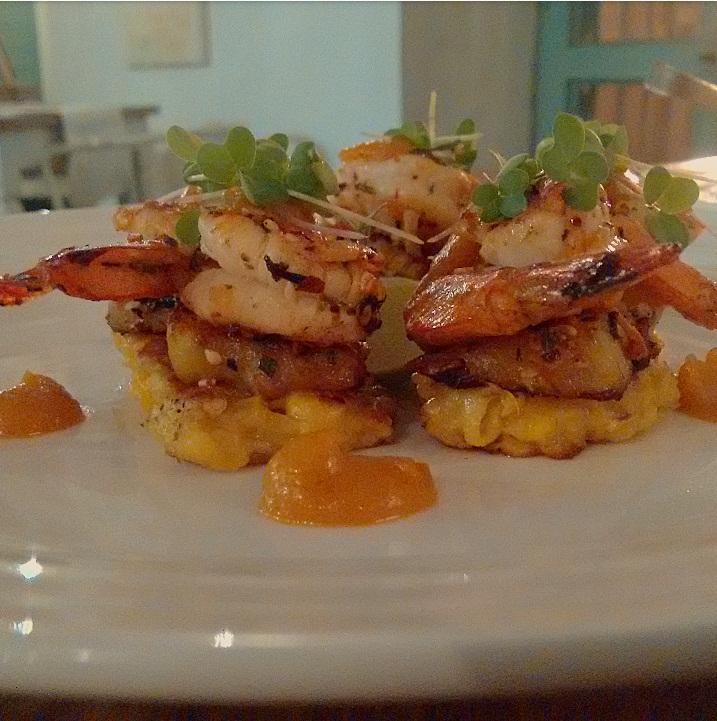
Vegetable Chop – It looked like a Goan croquet, but didn’t taste like one at all. This tasty, crumb fried snack was crispy on the outside and filled with a sweet pea and potato mash on the inside. You could taste the ginger and fennel coming through. It came with a strong, mustard sauce on the side.
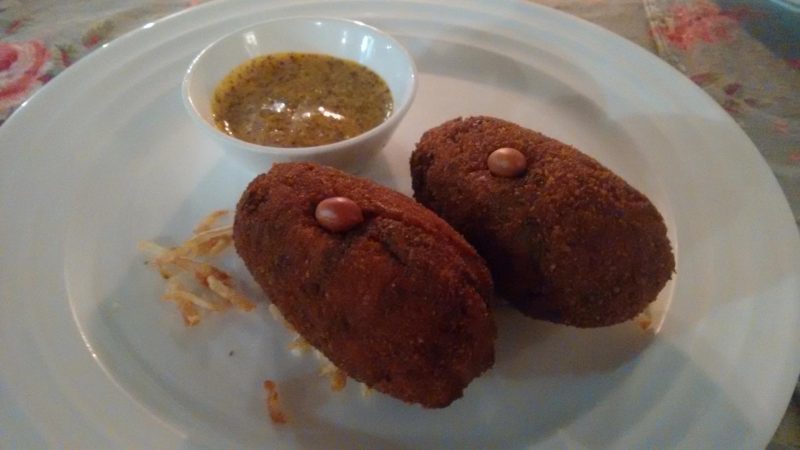
Ghugni with Poi – My favourite dish of the night, this tongue-tickling Bengali street food is made with split yellow peas cooked in gravy. On the side is super soft flat breads stuffed with lentils. Very light, comforting and tasty, this one is a must-try if you like your food mild. It didn’t come with poi (Goan bread) which was ok, because I liked it better this way!
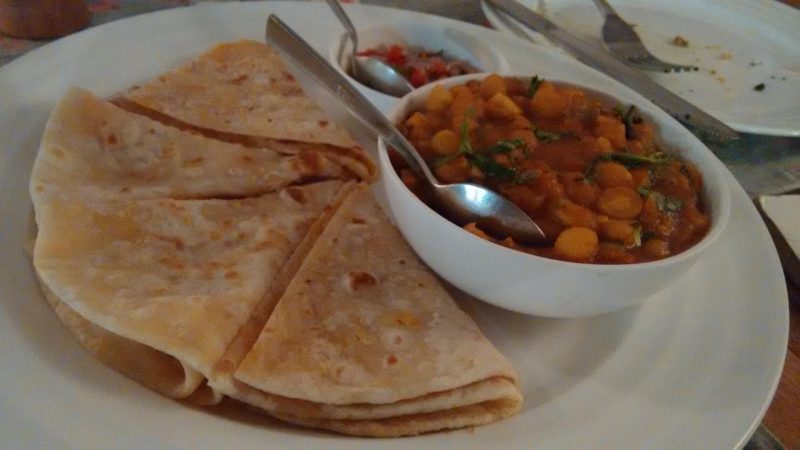
Rui Macher Shorshay Jhaal – This signature dish holds pride of place in Bengali cuisine and it’s somewhat of a staple in every household. The freshwater fish, Rohu is bought all the way from Bengal and is served alongside rice, dal and spinach. I’m probably not going to be Bong Certified for saying this, but it was too strong for my taste. However, if it’s meant to be this way, then Bengalis would probably love it.
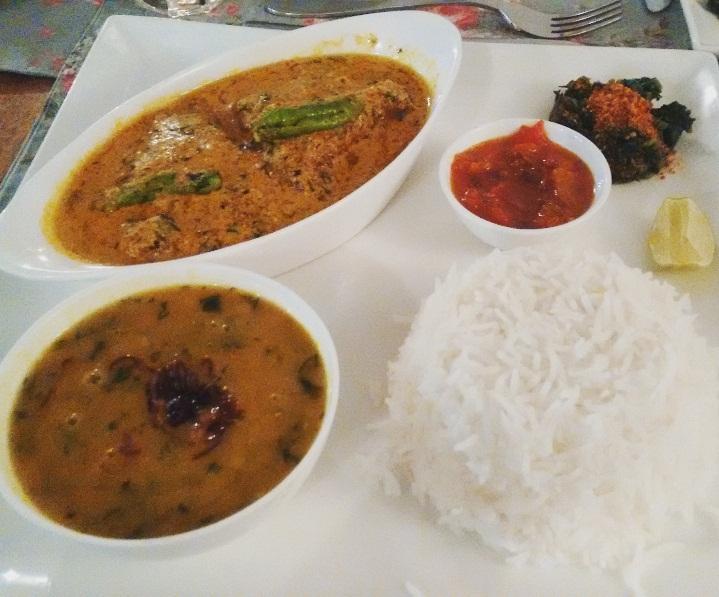
Kosha Mongsho– Yum!!! This dish was faaabulous! Succulent mutton pieces were slow cooked until buttery soft and came in a rich, velvety gravy with baturas, tomato chutney and spinach on the side. It was finger-licking divine. Definitely try this one out!!
(Please excuse the dark pictures, guys! There was a power cut!)
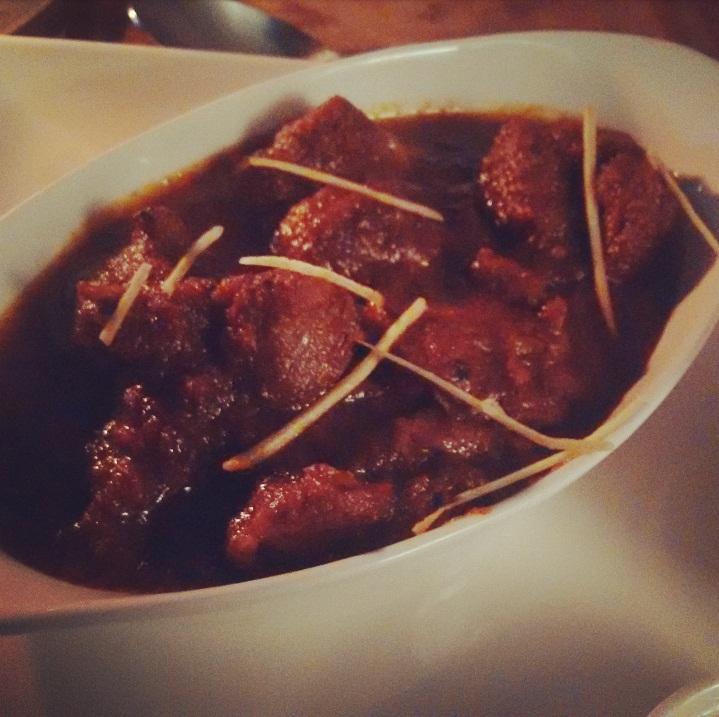
Kheer Khomola – Finally, dessert (and electricity!) Made with slow-thickened milk, this dessert was really rich and creamy. It’s usually topped with seasonal fruits and I was lucky to get mango! You may need to share it with someone as it can be too heavy to eat on your own.
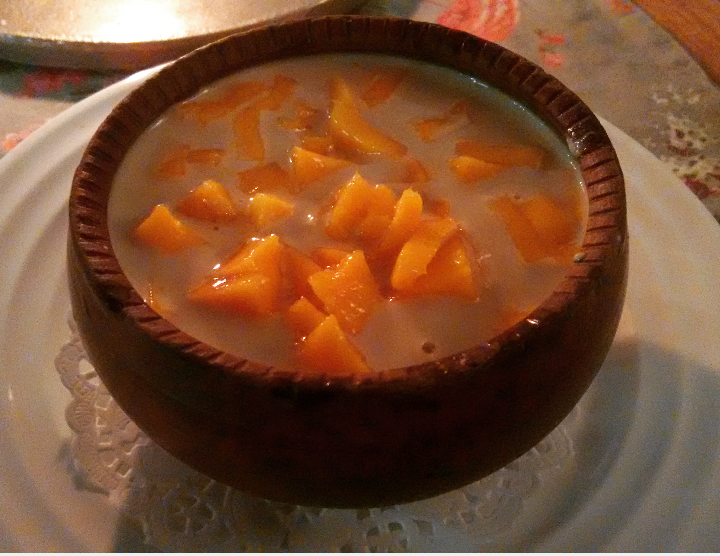
That brings me to the end of my review. I’d definitely go back to try more from the French menu and the bhappa doi from the Bengali one. Heard a lot of delicious things about it!
See you next time!!
DETAILS:
Address: CHOGM Road, Sangolda, Goa-403511
Meal for 2 : Rs. 2,500/- (approx, without drinks)

Thank you for the great review. Hope you will go back for some more. The bhaturas that you mentioned are called Luchis in Bengal and are different from bhaturas where the process is different. These are just plain maida puris. Also, the flat breads are called dalpuri with lentil stuffing.
Thanks again
Author
Hey Pritha! The Dalpuris were sooo good! Definitely going to try them at every Bengali place I find 😀